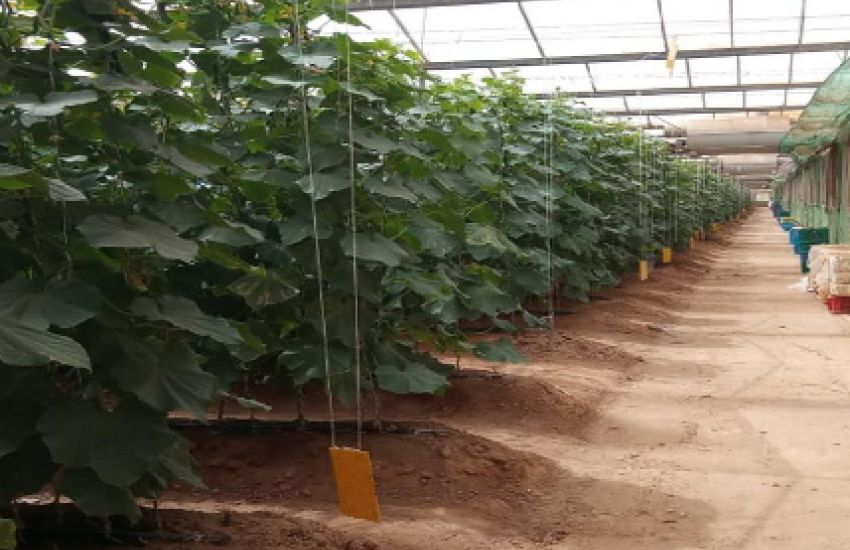
Cucumber is one of the most important greenhouse crops in Saudi Ariba. A very fast-growing plant, it takes only 2 to 3 weeks after the transplant of young cucumber plants for harvest to start. The downside of this fast-growing is that if the plant is trained to grow along a vertical wire (the training-wire), it quickly reaches the fixing point of the wire. This fixing point of the training-wire is called the crop-wire. Traditionally, when this point is reached, growers simply bend the top of the crop over the crop-wire. Due to gravity, the top of the crop then grows downward. When this downward growing top of the crop gets some length (say 1,5 meters), the top is picked up and bent over the crop-wire again. This can be repeated a third time, but after that, the bunch of leaves and stems becomes too messy that the crop has to be removed. After the removal of the old crop, a new crop has to be planted. Due to this practice, cucumber cultivation traditionally has three cycles a year and, therefore, remains three times in some weeks without production (Estidamah cucumber report, 2018).
Estidamah tested a new cropping system called “high-wire system”. In this case, the training-wire can be elongated and shifted aside to cope with the continuously growing stem (up to 60 cm a week). Of course, the continuously growing stems will just as well create a large bunch of stems. But in the high-wire system, the bunches result from de-leaved stems and are at the bottom side of the crop. Therefore, the bunch of stems will be much less messy. Hence, one crop cycle can stay productive for a longer period and increases product per kg. This reduces the initial costs for seeds, propagation and planting, as well as the number of weeks without production (Estidamah cucumber report, 2018).
Estidamah's experimental results on high-wire cucumber in a low-tech compartment showed that by adopting the “carousel system” in a high-wire cultivation system, the cucumber crop remained productive for a longer period. The high-wire crop had a harvest period of 146 days, whereas, in the reference (umbrella system), the crop was worn out after a harvest period of 110 days. Besides, in the high-wire system, the fruit quality and productivity remained equal for the whole period where the reference greenhouse showed 10 to 20% malformed fruits and a serious drop in productivity by the end of the harvest period (Estidamah cucumber report, 2018).
In order to improve farmers' income via increasing cucumber productivity, a field trial was conducted to evaluate cucumber productivity of two cropping systems in a commercial farm using two med-tech glass-covered greenhouses (5000 m2 each). In the first greenhouse, the traditional cropping system (umbrella-system) was used, while in the second one a new high-wire system was applied (Fig. 1).
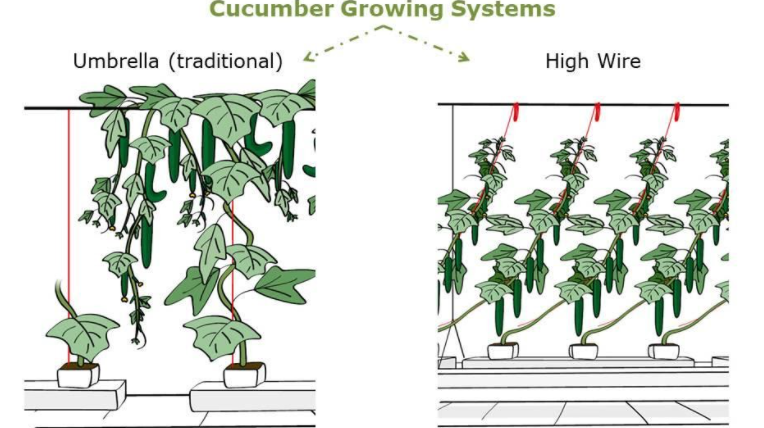
Experiment Setup
The experiment was conducted in a commercial farm in Riyadh region, Using med-tech glass-covered greenhouses (Picture 1). The area of each greenhouse was 5000 m2, with 125m length and 40m width. Greenhouse height is 4m. In these greenhouses, pad and fane cooling system was used. In each greenhouse, two thermometers were installed, and cooling systems were started manually when the inside air temperature was above 24-26oC. However, the farmer does not have any record for the inside air temperature.
Cucumber seeds (Beautysum RZ) were sown on Mar. 10th in a nursery inside the farm. After the appearance of the fourth true leaf, the seedlings top was removed to allow two axillary buds to grow from the second and third leaf base (Picture 2). This was done only for high-wire greenhouse. After that, the seedlings were transplanted on Mar. 28th in both greenhouses using soil cultivation. Table 1 shows the important dates of this trial.
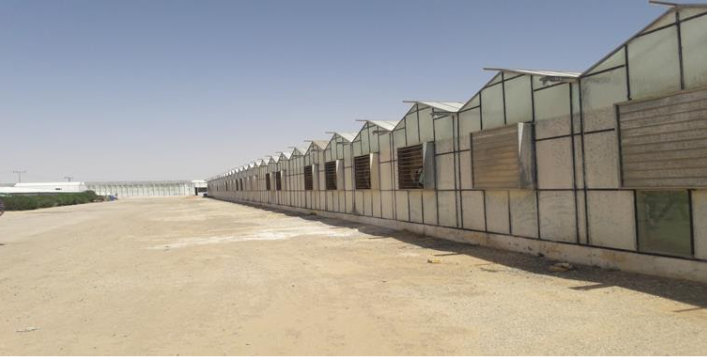
In the first greenhouse, row spacing was 1.6m and 20cm between plants in each row (Plant density 2.5 plant/m2), using umbrella cropping system (Traditional farmer practices). Under this system, plants were hooked on a fixed wire without removing any lateral shoots. While in the second greenhouse, row spacing was 1.6m and 25cm between plants in each row (Plant density 2.0 plant/m2), adopting the high-wire cropping system by using movable wire for each stem and removing the lateral shoots regularly to allow stem lowering.
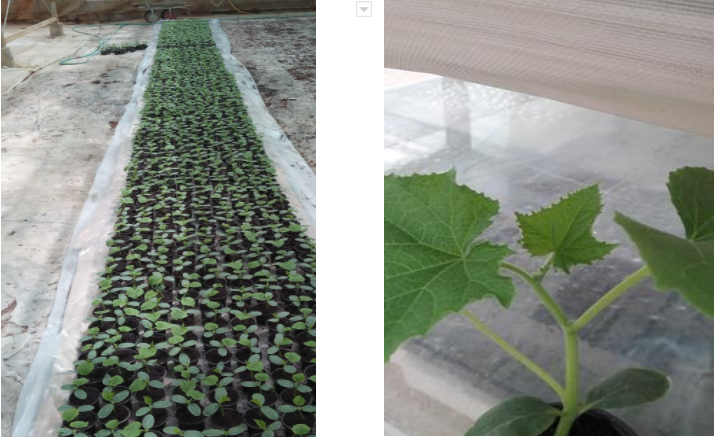
Experimental history
- Seed sowing date: High wire and Umbrella 10 March
- Transplanting date: High wire and Umbrella 28-March
- First harvest: High wire and Umbrella 12-April
- Last harvest: High wire 26-Jun and Umbrella 10-Jul
- Growing cycle from transplanting (Days): High wire 90 and Umbrella 103 days
Water Analysis and Fertilizer Recommendation
According to water analysis, the following fertilizer recommendation was prepared by Estidamah fertigation expert.
| pH | EC | NH4 | K | Na | Ca | Mg | Si | NO3 | Cl |
| 7.83 | 1.27 | 0 | 0.2 | 5.14 | 2.03 | 1.3 | - | 0.11 | 6.17 |
| SO4 | HCO3 | P | Fe | Mn | Zn | B | Cu | Mo | |
| 3.57 | 1.71 | 0.14 | 0.33 | 0.27 | - | 33.64 | - | 2.04 |
** Above table units are in mmol/l
The fertigation system used at the Commercial Farm
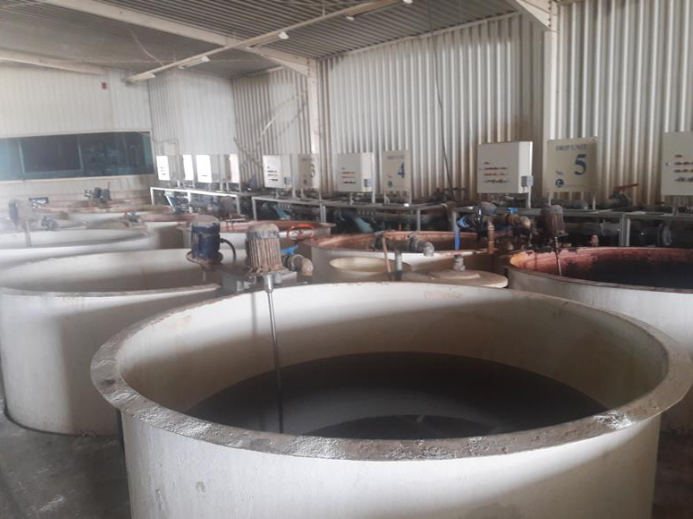
Estidamah tested a new cropping system called “high-wire system”. In this case, the training-wire can be elongated and shifted aside to cope with the continuously growing stem (up to 60 cm a week).
Using High-Wire Cucumber Growing System in Med-Tech Glass Greenhouse at the commercial farm in Al-EZAZIA region
Weekly Production
Fruit harvest was started on the 12th of April 2020 with a daily harvest. In general, the results showed that, in the first 6 weeks of harvest, the yield of the Umbrella growing system was higher than the high-wire system (Fig.2). While starting from the 7th week, the yield of high-wire was greater than the umbrella system. Furthermore, the harvest from the umbrella system was stopped on week 11, while the harvest from the high-wire system was stopped after 13 weeks (14 days after the umbrella).
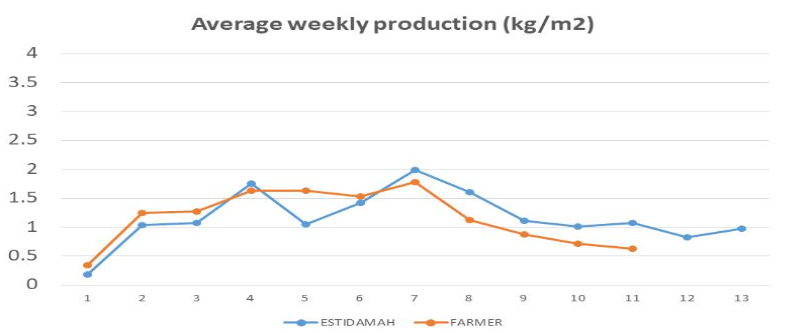
Accumulated Cucumber Yield
The results of the accumulated yield of the two growing systems showed that the yield of the umbrella system was greater than that of the high-wire system for the first 9 weeks of harvest (Table 3 and Fig. 3) while starting from week 10, the accumulated yield of high-wire was greater than umbrella system.
| Date | week | Accumulated weekly Yield Kg/m2 | |
| High-wire | Umbrella | ||
| 12 Apr | 1 | 0.18 | 0.35 |
| 19-Apr | 2 | 1.22 | 1.6 |
| 27-Apr | 3 | 2.3 | 2.87 |
| 5-May | 4 | 4.06 | 4.51 |
| 12-May | 5 | 5.11 | 6.14 |
| 20-May | 6 | 6.53 | 7.67 |
| 30-May | 7 | 8.52 | 9.45 |
| 6-Jun | 8 | 10.13 | 10.58 |
| 11-Jun | 9 | 11.23 | 11.46 |
| 18-Jun | 10 | 12.24 | 12.18 |
| 26-Jun | 11 | 13.32 | 12.81 |
| 2-Jul | 12 | 14.14 | 0 |
| 10-Jul | 13 | 15.11 | 0 |

Top stunting of high-wire growing system
In this trial, we expected that the cucumber plants grown using a high-wire cropping system will last longer as compared with the umbrella system. This expectation is based on Estidamah results in Estidamah Research Center. However, on the 26th of June, plant top stunting started to appear on plants grown in a high-wire system (Pictures 6 & 7). This top stunting could occur:
- In case of virus infection.
- High fluctuation in the day and night temperatures.
- Salt/drought stresses
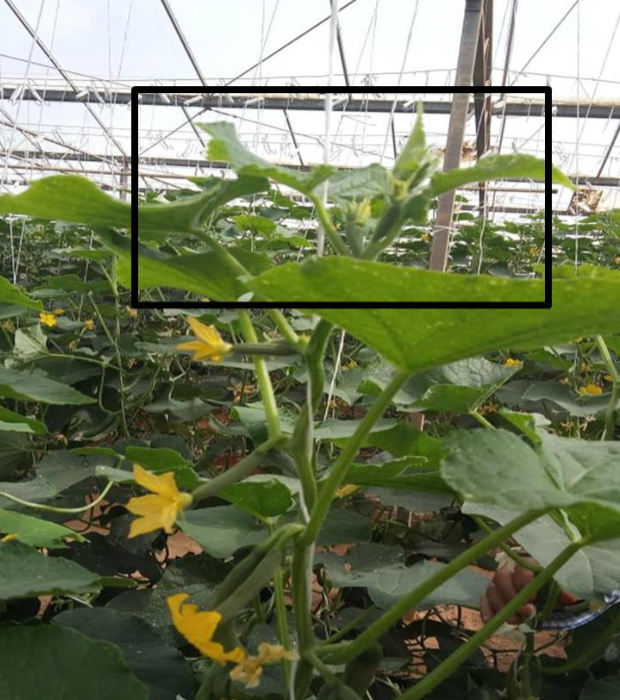
Conclusions
According to the results of this trial, yield (kg/m2) was improved by 18%, by using a high-wire cropping system, while yield per plant was improved by 47% (Table 5). The number of seedlings used for the high-wire cropping system was 20% lesser than the seedlings planted under the traditional growing system. Furthermore, the crop life-cycle was also increased by 14%, and according to the operation manager at the commercial farm, the time of harvesting was shortened by 30% since using a high-wire system makes it easier for harvesting as compared to an umbrella system (Picture 5).
On the other hand, using a high-wire system increased the number of workers needed per compartment by 40% (need more workers for stem lowering and leaf cut). In this trial, water-use efficiency and pesticide application (farmer use preventive pesticide treatment) were not affected by the training system.
| High wire | Advantage | Disadvantage |
|---|---|---|
| Percentage increase in yield (kg/m2) | 18% | |
| Percentage Increase yield per plant | 47% | |
| Reduction in No. of seedlings per compartment | 2560 | |
| Percentage reduction in No. of seedling per compartment | 20% | |
| Percentage increase in the crop life cycle | 14% | |
| Percentage saving in workers’ time for harvest | 30% | |
| Percentage increase in workers needed per compartment | 40% | |
| Percentage reduction in water-use efficiency | 1% | |
| Percentage reduction in pesticide application | 0% |
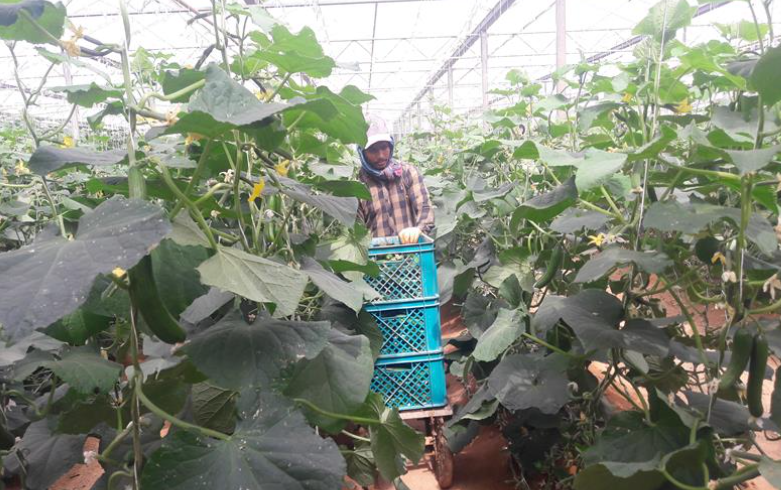
Recommendations
In order to have a better result, we recommend the following:
- Use new greenhouse soil to avoid any salt accumulation.
- The maximum greenhouse height is 4 m, and maybe we have to think about the best plant density for such conditions.
- Doing the same experiment on other planting dates (less temperature).
- Select cucumber varieties that are more resistant to heat and viruses.
- Increase stem density to 5 stems per m2 of high wire cropping system (2.5 plants per m2 with 2 stems per plant).